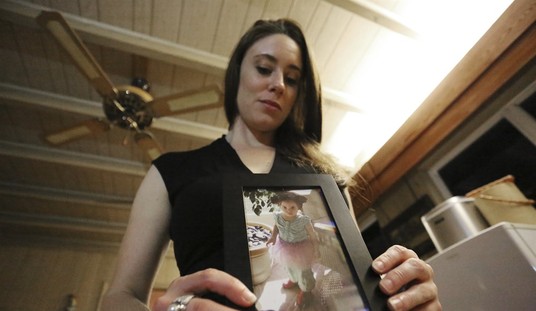The Wall Street Journal/NBC News poll and Gallup reported on the shrinking conservative base and rise in liberal voter identification in the country.
“Liberals Make Big Comeback in 2015,” reads the Journal’s headline, but is a three percent increase in liberal voter identification a surge? Moreover, liberals still represent fewer than 30 percent of voters, so how is this a “big comeback?”
Via WSJ:
In three national polls conducted so far in 2015, the analysis found that 26% of registered voters identified themselves as liberals — up from 23% in 2014. At the same time, the share of voters identifying as conservatives dropped to 33% from 37% in 2014.The analysis by GOP pollster Bill McInturff, who looked at survey data from 2010 to 2015, found that the biggest ideological shifts came among women, young people, Latinos and well-educated voters, as well as people in the West and in cities.
From 2010 through 2014, there was little overall variation in the share of people identifying themselves as conservative, moderate and liberal, with conservatives either a plurality or tied with moderates. But that stability seems to be ending this year. For the first time since 2010, conservatives are no longer a plurality: 38% identify as moderates, compared with the 33% who identify as conservative and 26% as liberal.
Hence why it’s still accurate to describe this country as right of center when it comes to politics.
Nevertheless, there has been a leftward shift regarding social issues:
Recommended
Americans’ growing social liberalism is evident not only in how they describe their views on social issues but also in changes in specific attitudes, such as increased support for same-sex marriage and legalizing marijuana,” the Gallup report said.Mr. McInturff’s analysis of WSJ/NBC data found that the demographic group that now has the most liberals – and that has seen the most dramatic swing to the left since 2010 — is women aged 18-49. Among those voters in 2015 polls, 37% said they were liberal, 23% said they were conservative — a 20 point swing since 2010 when 27% said they were liberal and 33% said they were conservative.
Younger voters also saw a notable swing to the left, with 35% of 18-34-year-olds saying they are liberal and 26% saying they are conservative. In 2010, that age group split 28% liberal-32% conservative.
It’s safe to assume that the gay marriage question tilted the scales. Most Millennials, even those who are Republicans, are in favor of gay marriage. It’s not unusual for young Republicans who favor gay marriage to cast themselves in the liberal/libertarian column when it comes to social issues. In fact, every demographic has seen an increase in support on this issue.
But, let’s get back to reality; liberals may have grown, but conservatives aren’t really dwindling from the voter rolls. Harry Enten at FiveThirtyEight crunched all the numbers from the Kaiser Foundation dating back to 2007. His verdict: the WSJ/NBC polls might be an outlier (via FiveThirtyEight) [emphasis mine]:

There’s no sign of much of a change in the percentage of self-identified conservatives since the George W. Bush administration. In Kaiser’s 2015 surveys, 35.3 percent of respondents identified as conservative. That’s about the same as the 34.7 percent average from 2007 to 2014.The Kaiser poll does show that more people identified as liberal this year than in any other year since 2007. The NBC News/Wall Street Journal poll found the same thing. In the Kaiser data, this seems to continue a trend from 2014, which also found a higher percentage of liberals than in previous years.
How are liberals rising without conservatives falling? Liberals seem to be taking over for moderates. In both 2014 and 2015, less than 35 percent of Americans identified as moderates in the Kaiser data, compared with 38 percent or higher from 2007 to 2010.
The Kaiser data tracks fairly well with what Gallup has shown from 1992 to 2014. When looking at self-identified ideology overall, Gallup hasn’t found any decline in the percentage of conservatives2 while showing moderates at an all-time low and liberals at an all-time high.
Perhaps most importantly, the reason that liberal identification has been up according to Gallup is because of Democrats. The Democratic base is more liberal, but there has been zero movement toward liberalism among independents or Republicans. In other words, the left is more liberal, but the median voter is not.
The higher percentage of liberals isn’t likely to lead to some sort of liberal revolution. Instead, the real story is a familiar one: The U.S. is becoming more polarized, with more and more Democrats identifying as liberal and more and more Republicans identifying as conservative.
I’m okay with that–but we should at least still maintain the ability to have a conversation with one another. There are some issues where the left and right can agree, and even if it’s just one issue; it could potentially have wide reaching effects. The left and right are gradually coming together on justice reform, which affects budgetary matters, constitutional issues, and family structures.
At the same time, to declare that there’s some blue surge is hardly accurate. If liberals tied with conservatives, different story, but they’re still representing less than 30 percent of all voters.

























Join the conversation as a VIP Member